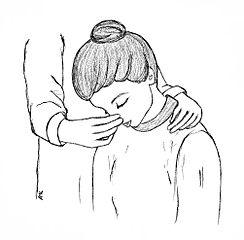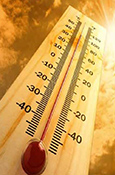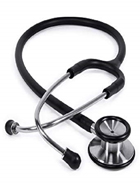Nosebleeds and how to treat them
Nosebleeds and how to treat them
A nosebleed can often be terrifying and embarrassing when it occurs in a public place such as the cafeteria or a classroom. However, with the right amount of care and treatment, nosebleeds can easily be treated on its occurrence anywhere.
Nosebleed, medically known as Epistaxis, can occur to anyone ranging from children to senior citizens. During a nosebleed, blood can flow from either one or both the nostrils and won't last for more than a few minutes. Our nose consists of small delicate blood vessels which may bleed because of any damage and though generally not that frequent, heavy nosebleeds cause serious health issues like high blood pressure, blood clotting disorder or anemia.
Nosebleeds are majorly of two kinds-
-
Anterior Nosebleed- It is a condition in which blood flows down from the front part of the nose. It is very common and can happen to anyone without leading to any serious health issues. Such kind of nosebleeds can be cured at home or school safely.
-
Posterior Nosebleed- It is a condition in which blood flows down from the back part of your nose and may further flow down to your throat. This is a rare condition which may indicate a serious health problem and a doctor should be consulted for treatment.
Causes of nosebleeds-
-
Nose injury
-
Exposure to dry air
-
Picking or scratching your nose
-
Dryness in nasal membranes
-
Presence of foreign bodies inside the nose
-
Allergic reactions
-
Continuous sneezing
Other causes that might be indicative of a serious health hazard are-
-
Upper respiratory infection
-
High blood pressure
-
Blood clotting disorder
-
Bleeding disorder
-
Cancer
Most of the time, nosebleed don't require any medical attention as it can be cured at home. But in-case the nosebleed does not stop within 20-25 minutes, then immediate medical care is needed. This can be a sign of posterior nosebleed, which is a serious health problem.
 How to stop a nosebleed?
How to stop a nosebleed?-
Normal breathing through your mouth while leaning forward can help in draining the blood.
-
Place a cold, wet cloth or an ice pack at the bridge of your nose.s
-
If the nosebleed is caused due to the presence of a foreign object, then going to a doctor will be helpful. Trying to remove it without any supervision can be risky as the doctors will help remove the object carefully.
-
If it is an anterior nosebleed, it can be treated at home or school. In order to stop the nosebleed, sit up with your face and squeeze the soft part of your nose and keep squeezing it up to 7 to 11 minutes and breathe from your mouth with your nostrils fully closed. Ensure that you don’t lay down or sit with your nose facing downwards as this may result in you swallowing your own blood. After 10 minutes, check to see if the nose is still bleeding and repeat the steps again.
If the bleeding does not stop, then it is advised to meet a doctor as it needs to be treated immediately.
How to prevent nosebleeds?
-
Try to keep a humidifier in your house to keep the dryness away.
-
Use sprays or gels to keep the nasal membranes moist.
-
Avoid scratching or picking your nose.
-
Avoid doing activities that may injure your nose or prefer wearing a headgear.
-
Limit your take of nasal decongestants, as it may end up drying your nose and cause more nosebleeds.





















